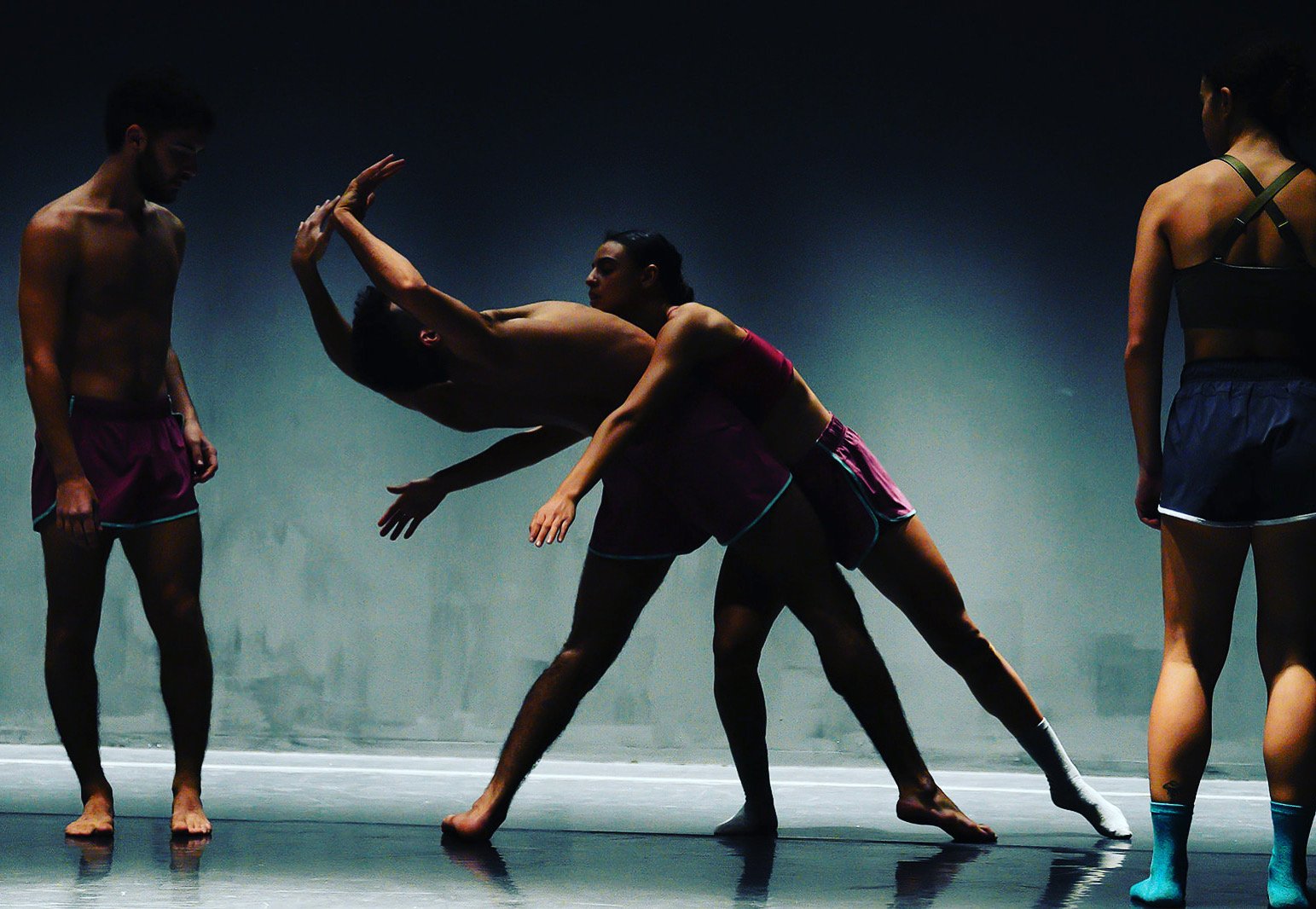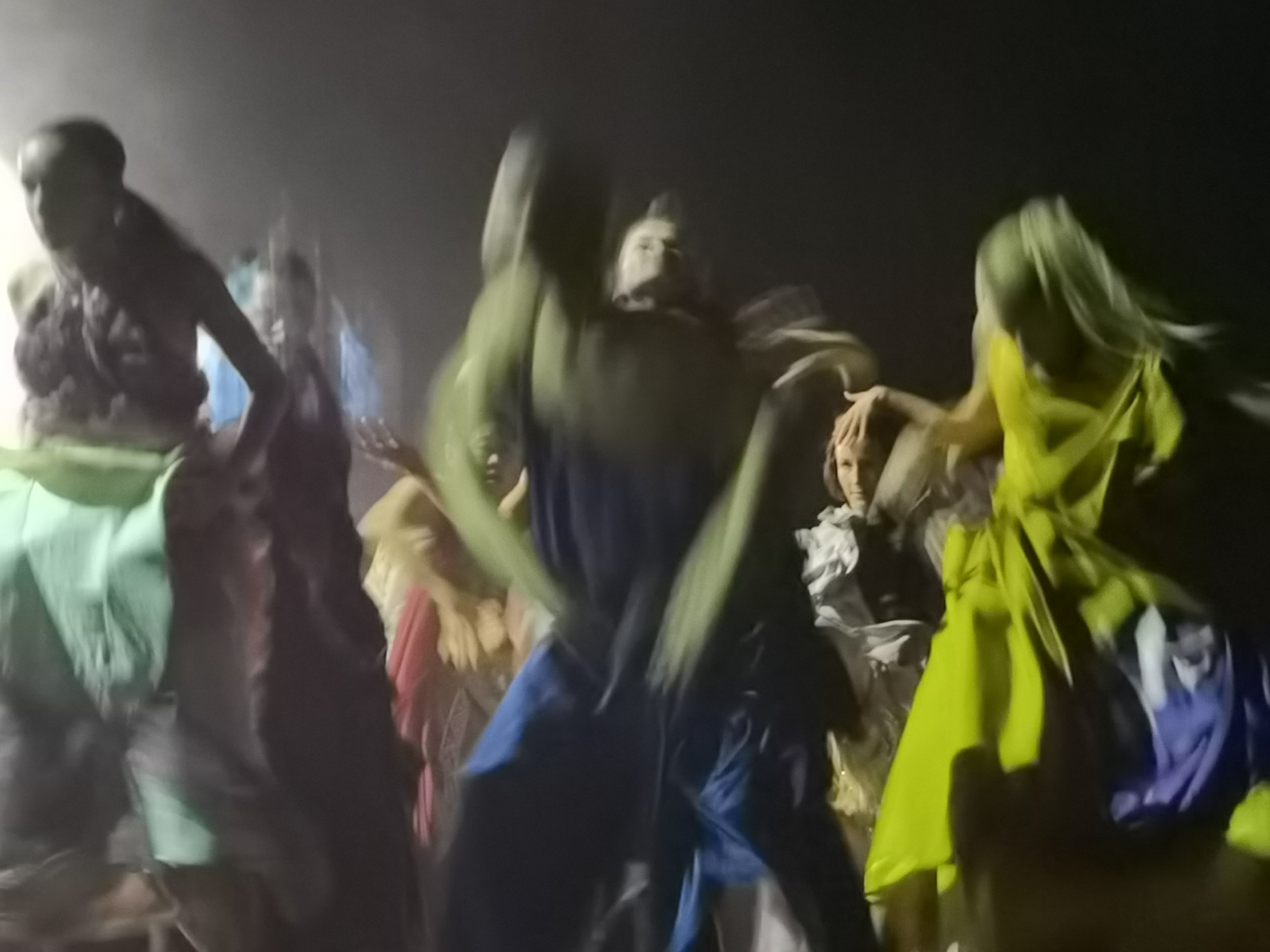Art’s business isn’t to imitate life, it is to elevate it.
Dancers/choreographers
There are very few dancers that can make an average choreographer look really good (most choreographers are average). A good choreographer, will make almost every dancer look good, including the average ones.
This also works with photographers/choreographies
Talent
Talent is the starting point. It’s not the road itself.
It always stays a starting point, like some sort of predisposition, no matter how long the road traveled. It doesn’t accumulate, like experience or knowledge does.
Choreography
Choreoegraphy is consciousness measured out in time, space and action.
Control
A good work, escapes being fully controlled by its maker. If as a maker, you manage to perfectly and fully control your work, it’s bad work. Good work can’t be controlled, it demands to be considered and dialogued with. It is it’s own entity.
Problems
The problem with most dance works is, they have something specific they want to say.
A good dance work can’t be bothered with saying anything in particular. That’s why it’s able to address most everything.
Also, emotional states are not a starting point, nor they are material to work with. The most they can be, is an unintentional byproduct. Something to observe as it emerges.
Art/Fashion
Fashion is not Art. Art can’t be bothered with being fashionable, if it wants to do what art is supposed to be doing. Fashion is a product of its own time, while also being part of what defines it. Art, on the deeper levels than apparences, the means of production and presentation etc, isn’t bound to its time. The period in which a work of art was made in, is anacdotal in relations to the artistic substance of the work itself. Unless it’s bad art of course, then, the date of creation is probably the only significant detail.
Humor me
Humor, as a creative tool and an artistic substance, is fundamental. Yet most times, it is used as a hiding place for artists unwilling, afraid, or unable to tap into the more existential and divine aspects of art making.
Safe death
Absolute safety, total security, in everything, eventually breads fear.
Laziness.
A dull mind.
Stagnation,
And eventually,
Deterioration and decay.
Choreographic works (as well as dance companies) are no different.
Platform/User
Choreographies are a platform. Dancers are users.
Different platforms are engineered in ways which prioritize different types of content sharing.
Dancers’ work is to learn how to best use the different platforms, in order to create and share meaningful content.
The Divine
Art that isn’t occupied with the Divine (term open to a multitude of interpretations of course, still…the notion is clear) in some way or another, is anecdotal.
Priorities
You either make the unison better, or you make the dancers better. Better dancers, better work though, and as a side effect, in the long run, not surprisingly, better unison.
Dead rep
In dance and choreography, the concept and practice of repertoire, in the case of dead choreographers, is a form of artistic cannibalism.
Usually fueled by commercial and political interests, always taking the aroma of some sort of touristic artifact.
There is no real dance making, without the presence of the choreographer and in the absence of a direct interaction between choreographer and dancers.
The art of choreography isn’t about movements. That would be like claiming cooking is about the recepie and has nothing to do with the chef.
Is it political?
My work is NOT political. The way I work, IS.
Who’s asking?
I used to think creating was about coming up with the right questions.
I start thinking that in reality, what I’m busy with is trying to answer the multitude of questions being thrown my way by the work itself. The work, the artistic process, is actually producing the questions. I’m just trying to keep up with answering.
What I misinterpreted as actively coming up with questions, was actually just being focused and attentive to hearing/seeing the questions as they arise from the work itself.
Choreography is pizza
Choreography, is the art of crafted assembly and organization of different, distinct elements, through time and space.
Pizza, is a simple yet genius example of the art of cuisine - the assembly of distinct, different ingredients - dough, tomatoes and mozzarella - through the process of oven baking.
We immediately recognize the essence of pizza, through how it looks, its smell, taste and texture. The experience and concept of pizza are obvious to us. We intuitively recognize the specific result of the assembly of these ingredients, in that specific manner, as pizza.
In the same way in which tomatoes are NOT pizza, movement, or dance for that matter, isn’t choreography. In order for choreography to be, there must be a crafted, creative (preferably original) process of assembly and organization of few distinct elements into a whole, a kinetic structure which is a separate entity. It’s about the assembly, the organization, the whole, transcending the building blocks and becoming its own thing.
Yet, what we are being served at most dance performances, is tomatoes. Or mozzarella. Or dough. And as good as the quality of these separate ingredients might be, it’s still not pizza.
A pizzeria serving only tomatoes, is actually a tomatoes shop. It can’t claim the title of pizzeria.
Not that there’s anything wrong with tomatoes, and if that’s what you came for, then great! But if like me, you go to dance performances expecting to get choreography, and you’re wondering why most dance pieces make you feel indifferent or worse, starving, it’s simply cause you’re not being served what you came for - pizza.
Also, some pizzas are made so poorly, you might get sick after digesting them.
#chorographygeek
Choreography
Choreography, from a social perspective, being that its main subject matter through the presence of dancers, is people, is an ongoing investigation and analysis of how power is being organized in the context of human groups and relations.
From an artistic perspective though, choreography is the main field, alongside music, in which the practice of looking into the alchemy of how to organize separate lines of information (through time and space) into one coherent whole (as in, counterpoint), is the main focus. Defining its specificities as a field of knowledge, a space of study and a meaning producing practice.
Looking at choreography nowadays, reveals the surprising, yet obvious, truth, that choreography is actually a small niche within the larger ‘dance world’, which main focus is on movement techniques/styles/languages, theoretical and philosophical concepts, political manifestos and social agendas, therapeutic processes, story telling, formalistic esthetics, autobiographical diaries, performance art, entertainment etc.
Choreography, the practice, research and craft, is completely absent from almost every dance work made and presented today, regardless of the fact someone is usually credited for ‘choreography’ - a term generally misused and a practice often misunderstood.
Understanding where choreography is actually situated within the context of dance making in general - a small, fringe, (avent guard?) niche - is of great value to those who’s artistic focus is indeed, choreography.
Décentralisation
Décentralisation
The most subversive and urgent strategy choreography making can adopt nowadays, is décentralisation.
If there’s any sense whatsoever in looking outside the studio and choreographic process, for any sort of substance worth relating to, it’s this.
Decentralizing the conventional structure of hierarchies between choreographer and dancers, rethinking the distribution of power and responsibilities, coming up with new ways of defining what choreography/dance making can actually be, is the most valuable manner in which dance can become a relèvent force in pointing out societal anomalies and proposing alternatives.
Luckily, it’s also the surest way to avoid making bad choreography, repeat/copy others, ensure originality, make for happy, empowered and engaged dancers, bring forth a sense of meaning, change the established paradigms and rescue dance from its current free fall into all effect / zero structure default mode. Effect is always the result of centralized power, while structure emerges organically only when centralized control is being dismantled.
Centralized power, be it in politics, economics, art making, education and whichever other form of ‘humans organizing themselves’, is always the lesser choice. Benefiting the few in perverted ways and harming the many. Down spiraling rather then uplifting. Limiting, dumbing, numbing, oppressing, confusing.
#decentrlize
Post intensive thoughts
Dancers, do not automatically obey choreographers.
Authority, like trust, should be earned. Let them sweat at convincing you their proposition is of value for you. You are many, they are few. Learn your worth and power.
Your time, energy, work, effort, creativity and sweat should be rightfully earned. By choreographers. Not the other way around.
It’s choreographers that are mainly at test. It’s choreographers that are continuously being auditioned. By dancers.
Reverse the pyramid.
Expose the crooks. The opportunists. The talentless. The power driven. The psychopathes, the sadistic. The manipulative and exploitative.
Emancipate yourself.
No choreographers, if no dancers. Don’t forget.
This goes beyond dance, but dance is a great place to start.
How/What
Choreography isn’t about telling dancers what to do. It’s about the development and sharing of tools and strategies in order for dancers to be able to make their own minds and decisions.
In the same way in which teaching should be about teaching how to think, rather than what to think.



















